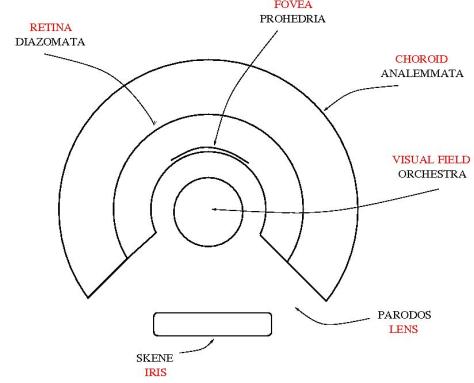I want to understand what “computing with space” might be. By making a parallel with the usual computation, there are three ingredients which need to be identified: what are the computing with space equivalents of
1. the universal computing gate (in usual computing this is the transistor)
2. the universal machine (in usual computing this is the Turing machine)
3. what is the universal machine doing by using its arrangement of universal computing gates (in usual computing this is the algorithm).
I think that (3) is (an abstraction of) the activity of map making, or space exploration. The result of this activity is coded by a dilation structure, but I have no idea HOW such a result is achieved. Once obtained though, a mathematical model of the space is the consequence of a priori assumptions (that we can repeat in principle indefinitely the map making operations) which lead to the emergent algebraic and differential structure of the space.
The universal gate (1), I think, is the dilation gate, or the map-territory relation.
Today I want to pave the way to the discovery of the universal machine (2). This is related to my previous posts The Cartesian Theater: philosophy of mind versus aerography and Towards aerography, or how space is shaped to comply with the perceptions of the homunculus.
My take is that the Greek Theater, or Theatron (as opposed to the “theater in a box”, or Cartesian Theater) is a good model for an universal machine.
For today, I just want to point to the similarities between the theatron and the eye.
The following picture represents the main parts of the theatron (the ancient greek meaning of “theatron” is “place of seeing). In black are written the names of the theatron parts and in red you see the names of the corresponding parts of the eye, according to the proposed similarity.
 Let me proceed with the meaning of these words:
Let me proceed with the meaning of these words:
– Analemmata means the pedestal of a sundial (related with analemma and analemmatic sundial; basically a theatron is an analemmatic sundial, with the chorus as the gnomon). I suggest to parallel this with the choroid of the eye.
– Diazomata (diazoma means “belt”), proposed to be similar with the retina.
– Prohedria (front seating) is a privilege to sit in the first few rows at the bottom of the viewing area. Similar with the fovea (small pit), responsible for sharp central vision.
– Skene (tent), the stage building, meant to HIDE the workings of the actors which are not part of the show, as well as the masks and other materials. When a character dies, it happens behind the skene. Eventually, the skene killed the chorus and became the stage. The eye equivalent of this is the iris.
– Parodos (para – besides, counter, and ode – song) entrance of the chorus. Eye equivalent is the crystalline lens.
– Orchestra, the ancient greek stage, is the place where the chorus acts, the center of the greek theater. Here we pass to abstraction: the eye correspondent is the visual field.
The Theatron is missing half of what it is. We have to have both the logical and the physical aspects and their respective dynamics to understand it. The Map and the Territory are the same thing at the fixed point of their mutual maps.